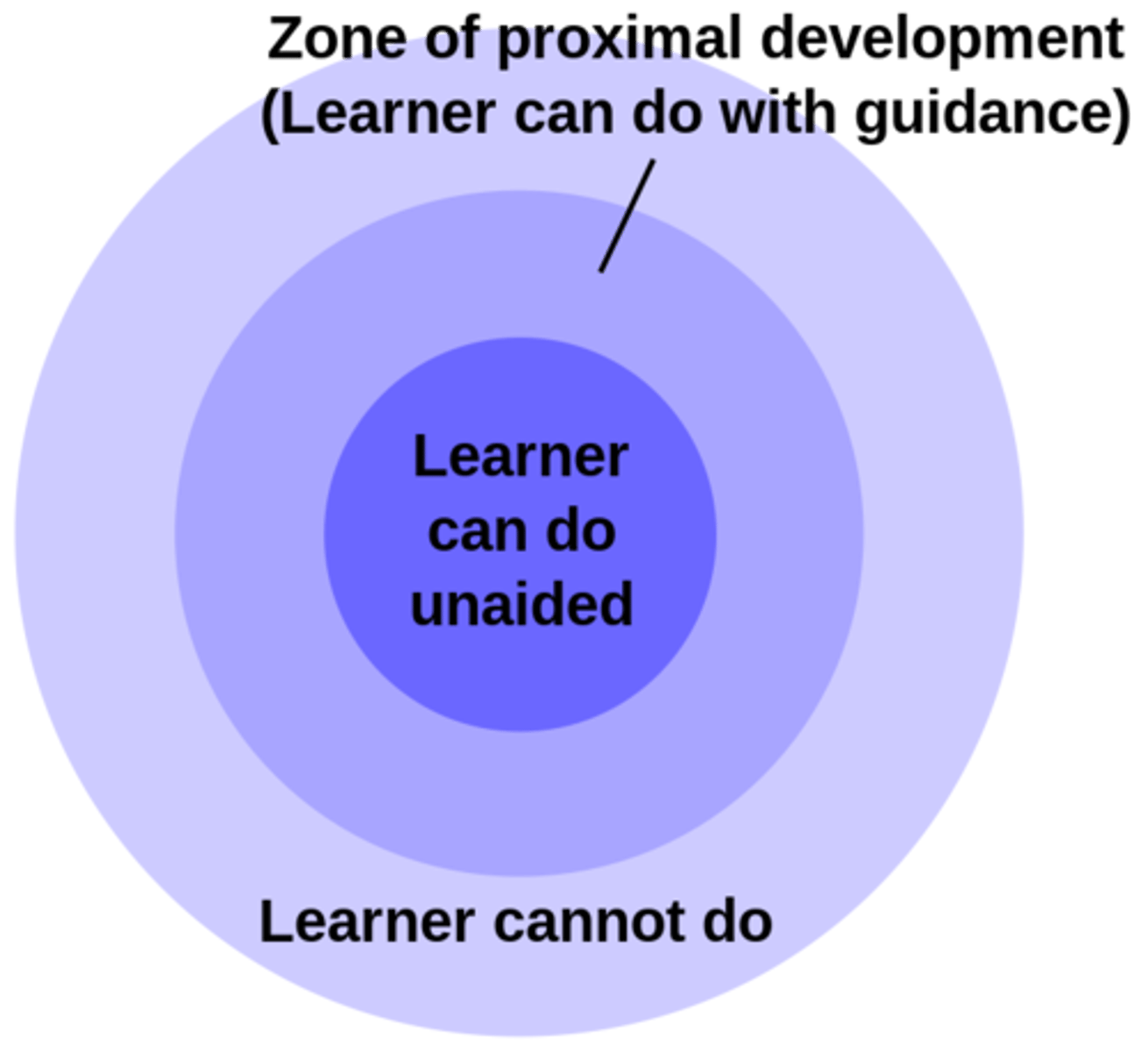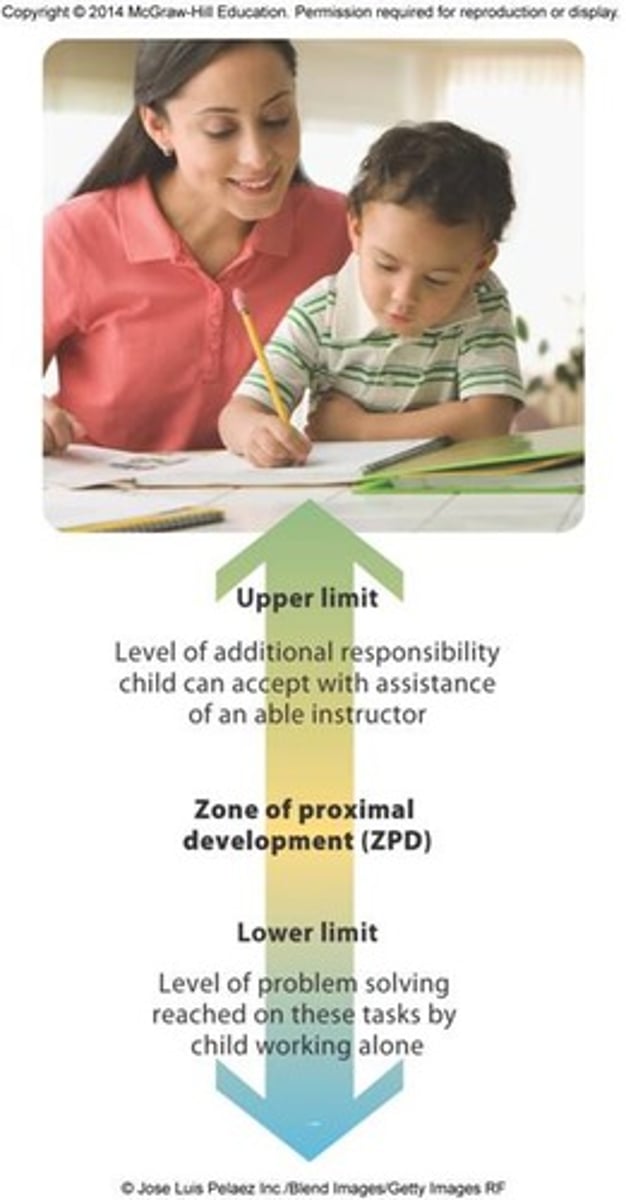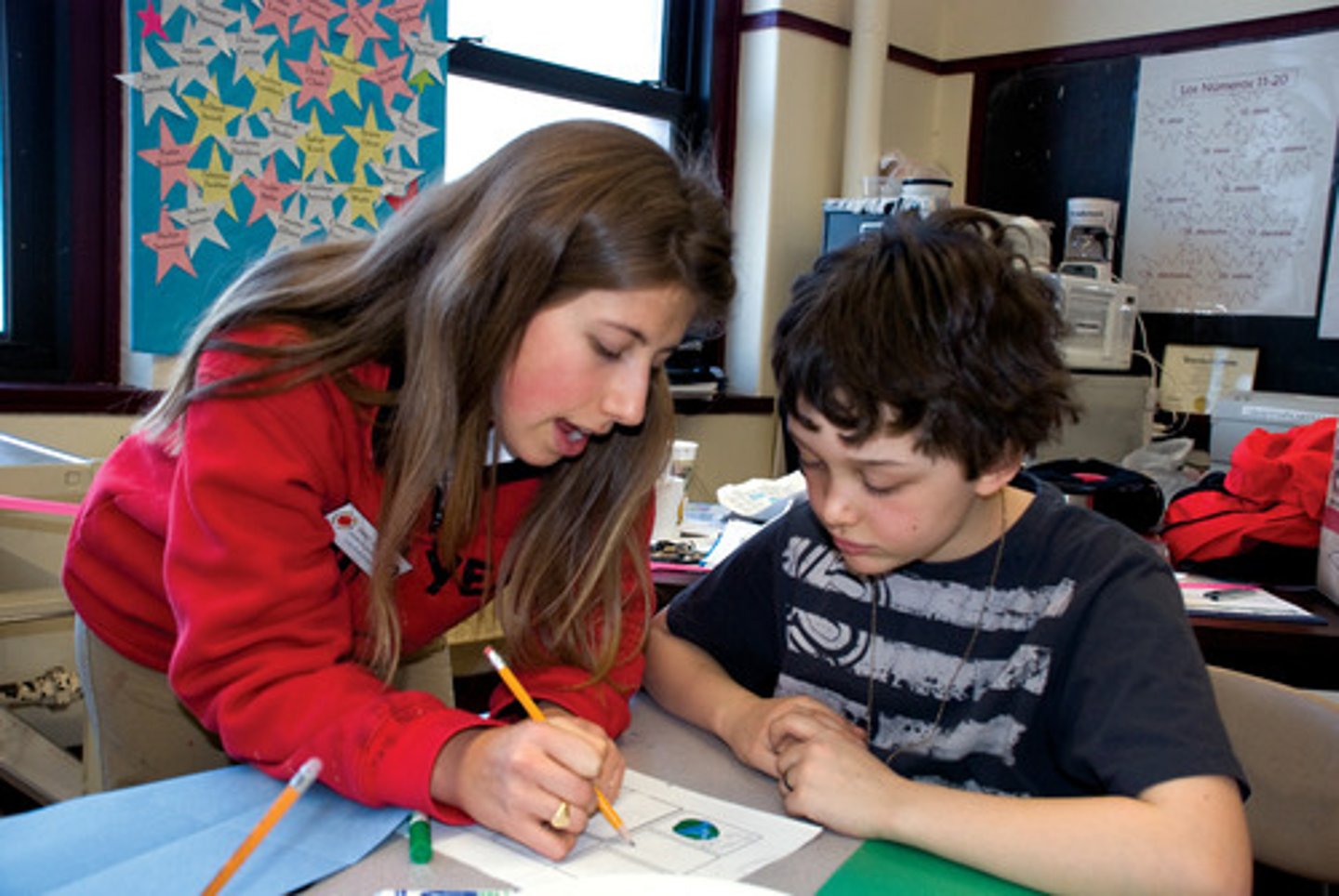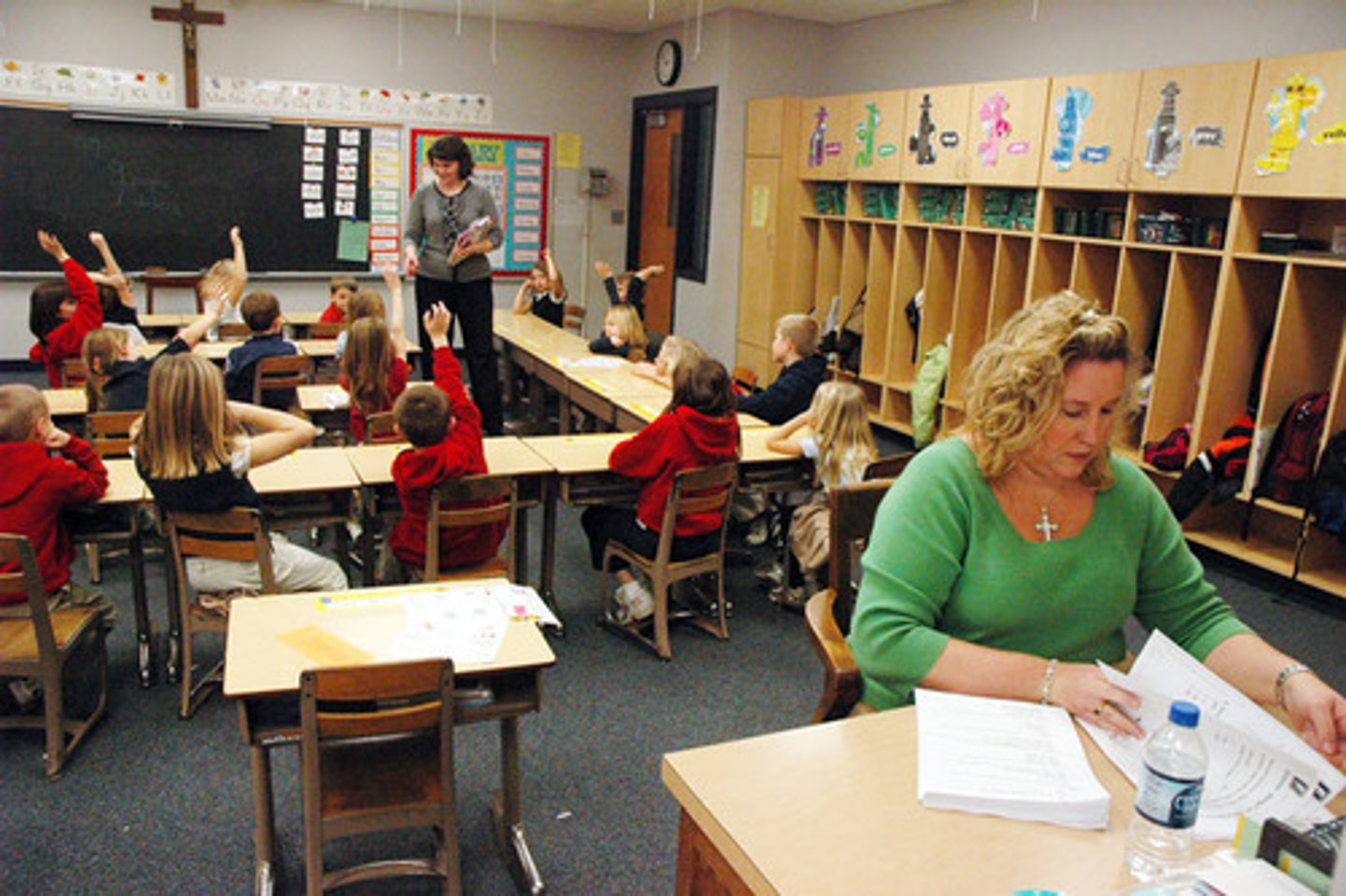Vygotsky's Theory
1/23
There's no tags or description
Looks like no tags are added yet.
Name | Mastery | Learn | Test | Matching | Spaced |
|---|
No study sessions yet.
24 Terms
Lev Vygotsky
Russian psychologist in the 1920's and 30's
... influenced by + agreed with Piaget
- sociocultural approach to cognition and development

Vygotsky agreed with Piaget that...
Reasoning abilities develop in a sequence and that these abilities are different at different ages
Vygotsky's developed theory from Piaget's
= Believed that cognitive development was a social process, involving learning from others ("experts")
Also believed that language was a far more important factor in learning than Piaget
... placed more emphasis on the role of other people in learning
A01 - Vygotsky
1. Social learning
2. Zone of Proximal Development
3. Scaffolding
Social Learning
social learning tends to precede cognitive development
children = apprentices who develop cultural tools (e.g., language)
cognitive skills develop as children interact with others
children learn from experts

experts
adults or more knowledgeable people who are more advanced/knowledgeable about a certain task
Zone of Proximal Development
Vygotsky emphasised learning through interaction with others
... he identified a gap in this learning
i.e.
the gap between a child's current ability to do something and a child's potential of what they "could do" with the interaction and involvement of a more expert other
- A child's current ability/level can be defined by the cognitive tasks they can perform unaided
- The child's potential may be influenced by an adult or a more advanced child
- Expert assistance = crossing the gap
... Children acquire more reasoning abilities and higher mental functions (formal reasoning, abstract thought) through interaction with advanced others

Scaffolding
= refers to all the different types of help experts can give to the child to help them cross the zone of proximal development
... the process of helping a learner cross the zone of proximal development and advance as much as they can given their stage of development
=> Typically, the level of help given declines as the learner crosses the zone of proximal development

Scaffolding example
1. Give the child a starting point
2. Show them how to do it/demonstrate
3. Praise them if they did it correctly
4. Encourage them if they find it tough
5. Refer to the most important aspects of the task if needed
6. Correct them if they get it wrong

Bruner's Development of Scaffolding
Recruitment
Reduction of degrees of freedom
Direction Maintenance
Marking critical features
Demonstration
Recruitment
= engaging the children in the task
Reduction of degrees of freedom
= focusing the child on the task and where to start
Direction maintenance
= encouraging the child in order to help them
Marking critical features
= highlighting the most important parts of the task
Demonstration
= showing the child how to do aspects of the task
Vygotsky - Bruner model
the 5 aspects of scaffolding that help a child cross the zone of proximal development, where the level of help correlates to the advancement of the development
what happens when the 5 aspects of scaffolding take place?
... knowing that older children or adults can provide support for younger children, but this doesn't tell us anything about what happens as a result of the support
limitation of Vygotsky - Bruner model
...We know about scaffolding from the Vygotsky-Bruner model but not much detail about the impact it has
= Noted that better evidence would show that the level of help declines during the process of learning as the child improves in ability
Scaffolding levels of help - Wood
Wood et al.
... noted that these strategies used by experts will decline from a level 5 to a level 1 as the child crosses the zone or proximal development
=> therefore, an adult is more likely to use level 5 techniques when first helping and gradually reduce this down to 1 as the child grasps the task
· Level 5 = the most help an expert can give
· Level 1 = the least help an expert can give
Wood - levels of help
Level 5 = demonstration => mother draws an object with crayons
Level 4 = preparation for child => mother helps child grasp a crayon
Level 3 = indication of materials => mother points to crayons
Level 2 = specific verbal instructions => mother says, "how about using the green crayon"
Level 1 = general prompts => mother says "now draw something else"
Vygotsky's theory application in education
- Social interaction in learning = group work
- Teaching assistants in lessons
- Individual assistants from teacher

A03 STRENGTH - zpd
P
There is supporting evidence for Vygotsky's theory about how there is a gap in the level of reasoning a child can achieve on their own and what they can achieve with help from more expert others.
EV
For example, Roazzi and Bryant gave 4-5-year-old children the task of estimating the number of sweets in a row. In one condition the children worked on their own and in another they worked with the help of an older child.
EX
Most children working alone failed to give a good estimate. In the expert help condition, the expert children were observed to offer prompts, pointing the younger children in the right direction to work out how to arrive at their estimation, most 4-5 year older receiving this kind of help successfully mastered the task.
EXT
In addition to this, Vygotsky's ideas have been highly influential in education in the last decade. The theory that children can learn more and faster with appropriate scaffolding has raised expectations on what they should be able to achieve, and social interaction in learning through group work and peer tutoring, as well as individual adult assistance, have been used to scaffold children through their zones of proximal development.
LB
This supports the idea that children are able to develop additional reasoning abilities when they work with a more expert individual, as well as showing its application in real life, and therefore suggests that the zone of proximal development is a valid developmental concept.
A03 STRENGTH - research
P
A study to support scaffolding comes from Conner and Cross (2003).
EV
They carried out a longitudinal procedure using a sample of 45 children, asking the participants to engaged in problem solving tasks with the help of their mothers. The children were observed at 16 months, 26 months, 44 months, and 54 months.
EX
The mothers used contingent interaction, offering help when it was needed rather than constantly. This demonstrates their gradual withdrawal of support, which shows how the use of the levels of scaffolding decline as the children cross the zone of proximal development and begin to grasp the task better.
C
However, Vygotsky has been criticised for underestimating the role of maturation as young children may not be ready to learn certain things, no matter how good the instruction.
LB
Despite this, Connor and Cross' longitudinal study provides clear evidence of how the levels of scaffolding can provide a framework for learning in young children when guided by an expert, and this can be used to support Vygotsky's theory.
A03 WEAKNESS - individual differences
P
However, Vygotsky assumed that the processes of learning are largely the same in all children and does not consider how individual differences may influence learning.
EX
Some children learn best during social interaction whereas others may not learn best individually. Personality and style of information processing of the learner may have powerful effects on what sort of activities and help works for different children.
EV
For example, Howe et al. found that children's ability to learn varies considerably between individuals, even in group learning situations. She put 9-12-year-old in groups of 4 to discuss movements of object down a slope, and even though their levels of knowledge all increased after discussion, some of the children had not picked up on the same facts and knowledge as others in their group.
EX
This shows how, even when children experience the same interaction, they don't necessarily have the same nature or cognitive development.
EXT
Furthermore, children's rate of cognitive development is determined by their level of motivation and interest, and so even with all the scaffolding and social support available to them, they still may not be able to learn or perform certain tasks because they do not want to.
LB
This is a weakness because it shows how Vygotsky's theory doesn't fully explain the differential rate of development of different children.